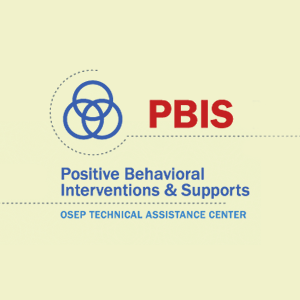 Editor’s Note: The following PBIS Practitioners Guide[1] — titled “Addressing School Climate: 5 Ways Schools Can Positively and Proactively Support All Students”[2],[3] — originally appeared on the OSEP Center on Positive Behavioral Interventions and Supports website and is authored by the following faculty members in the Center for Behavioral Education and Research at the Neag School: Brandi Simonsen, George Sugai, Jennifer Freeman, and Tamika La Salle. To access this and other resources related to positive behavioral interventions and supports, please visit pbis.org/whats-new.
Editor’s Note: The following PBIS Practitioners Guide[1] — titled “Addressing School Climate: 5 Ways Schools Can Positively and Proactively Support All Students”[2],[3] — originally appeared on the OSEP Center on Positive Behavioral Interventions and Supports website and is authored by the following faculty members in the Center for Behavioral Education and Research at the Neag School: Brandi Simonsen, George Sugai, Jennifer Freeman, and Tamika La Salle. To access this and other resources related to positive behavioral interventions and supports, please visit pbis.org/whats-new.
School Climate Challenges
Bullying incidents and other concerning behaviors present educators with significant, immediate challenges in supporting students. Rather than waiting for these behaviors to occur and reacting, we encourage educators to adopt positive and proactive practices to support students and prevent these behaviors from occurring.
Three Reasons to Invest NOW in Positive and Proactive Practices
- Schools often serve as the de-facto mental health support system for students. Providing all students with a safe, predictable, and positive environment is critical in effectively addressing many mental health concerns.
- Implementing basic positive and proactive practices works. When these key practices are implemented well, students’ social, emotional, behavioral, and academic outcomes improve.
- By implementing positive, proactive practices, schools can more effectively support students who may experience greater difficulties and require additional support.
A Call for Positive and Proactive Practices
School leaders and educators must not wait until students demonstrate signs of stress or report bullying incidents. We must act now and proactively address students’ social, emotional, and behavioral needs; bolster positive school climates so that learning can occur; and firm up our relationships with students to ensure they feel safe, appreciated, and respected.
Specifically, educators must increase their investment in and use of five empirically supported, high-impact practices:
- Establish positively stated expectations that explicitly communicate respect for all students and that value and embrace diversity among students as well as adults. Clearly describe how students and adults can display observable expectations in each classroom routine and school setting that contribute to a common language and a predictable, respectful, and safe experience for all.
- Explicitly and purposefully teach expectations across all classroom routines and school settings. Specifically define, model, and practice each expectation, and use positive and negative examples so that students see the line between appropriate and inappropriate behavior and actions. Also, teach students specific problem-solving strategies for instances in which they experience or see disrespectful behavior. Create a school-wide “stop signal” for disrespect. Teach students to use that signal to walk away from disrespectful acts. Show students how to use that signal when standing with a peer who is experiencing disrespectful behavior. And, help students identify how and when they should report disrespectful actions to an adult.
If simple instruction is not sufficient, adopt a structured social skills program. For example, Bully Prevention is a free, empirically supported curriculum that may be used to supplement school-specific lessons. The Collaborative for Academic, Social, and Emotional Learning is a useful guide to other curricula. Consider explicitly teaching expectations in the context of the national dialogue through practice and mini-lessons on how to interact respectfully with others who supported different political positions.
School leaders and educators must not wait until students demonstrate signs of stress or report bullying incidents. We must act now and proactively address students’ social, emotional, and behavioral needs
- Give specific praise for displays of appropriate behavior. Actively supervise students to catch as many instances of appropriate behavior as possible. When disrespectful behavior occurs, provide a specific error correction to identify the mistake and to teach and practice the correct response. Give feedback so that praise exceeds corrections (e.g., 4 to 1 ratio).
- Use data to monitor implementation, and screen for students who require more intensive support. Monitor how lessons are provided and how students respond to the behavior of their peers. Although published screening and progress monitoring tools are available, start regularly examining existing data sources (e.g., office referrals, school nurse visits, academic failure, attendance) to identify students who may require more targeted or intensive supports. Look for students who display interpersonal (e.g., teasing, intimidation, harassment) as well as personal (e.g., withdrawal, anxiety, self-harm) challenges.
Utilize school climate data to examine experiences of groups of students who may be more personally affected by the national conversation, including students who identify as Muslim, Jewish, Black, Latinx, or LGBTQ; have disabilities, history of trauma, or mental health challenges; have recently immigrated to the United States or have family members who are immigrants; or represent other diverse backgrounds. Diversity is a positive quality; embracing and valuing diversity requires a safe, respectful environment and a deliberate approach that supports all students, families, and staff members.
- Provide a differentiated continuum of positive support for students that integrates and addresses academic, behavioral, social, and emotional needs and expectations within a multi-tiered systems of support (MTSS) framework, such as Positive Behavior Interventions and Supports or Response to Intervention. Work as teams within MTSS to identify and deliver appropriate practices for students who require targeted or intensive support. Use student responsiveness to intervention to move to more or less specialized supports.
Schools and/or classrooms that use these five practices on an ongoing basis tend to have positive climates and the capacity to be proactive in addressing the social, emotional, and behavioral needs of their students.
 Facebook
Facebook
 Twitter
Twitter
 LinkedIn
LinkedIn
